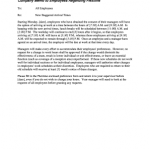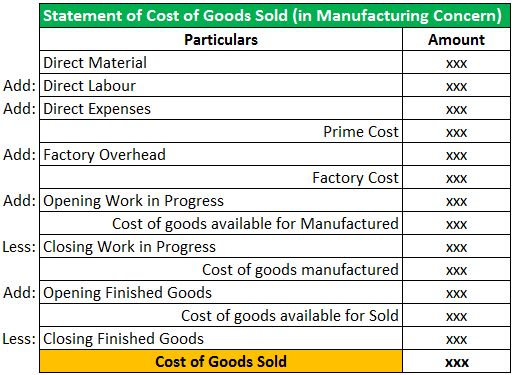
Today’s leading accounting platforms offer standard security features such as data encryption, secure credential tokenization and more. While human error will always play some role in security breaches, you can be confident in your accounting platform when it comes to keeping your information safe. QuickBooks Online is a leader in the accounting industry with it being the bookkeeping software of choice for many accountants, certified public accountants https://www.accountingcoaching.online/what-is-the-offset-journal-entry-for-accrued/ (CPAs) and bookkeepers. When comparing it to other bookkeeping providers, such as FreshBooks and Xero, we note that all three have a 30-day free trial to test the system out. This is important to note since you’ll want to make sure that it is capable of doing what you need in a manner that you understand and can digest. Another cumbersome feature that users don’t like is the requirement that clients must establish their own accounts to pay an invoice.
QuickBooks Online Pricing: How Much Does QuickBooks Cost for 2024?

In addition, we employ a comprehensive editorial process that involves expert writers. This process ensures that articles are well-researched and organized, offering in-depth insights and recommendations. The Fit Small Business editorial how to figure out how much to sell for based on profit margin policy is rooted in the company’s mission, which is to deliver the best answers to people’s questions. This serves as the foundation for all content, demonstrating a clear dedication to providing valuable and reliable information.
QuickBooks Online Plus
Any sized business has paperwork, even just a single freelancer. But with the right accounting or invoicing software for small businesses, filing tax information can be a simple and streamlined process. QuickBooks makes this process even easier thanks to a huge range of integrations and plug-ins you can use, with familiar names such as PayPal, Shopify and MailChimp all present and accounted for. QuickBooks Online also offers more automation features, which might be a better fit for small businesses — the more tasks you can delegate to the software, the more efficient your business will be. QuickBooks Desktop also has a more dated and harder-to-navigate UI than QuickBooks Online. QuickBooks Online has a monthly pricing structure — you pick the right plan and then pay every month for the service.
QuickBooks Online
- From automating accounting work and preparing for tax time, proactively manage cash flow, QuickBooks can do it all.
- For $1,922 per year, get the Enterprise plan with advanced pricing, reporting and inventory.
- According to the statistics published by the company, QuickBooks Plus is the most popular of the five packages.
- It is an advanced feature that lets you import and export data between QuickBooks and Microsoft Excel.
- In terms of invoicing, there are many reasons to love QuickBooks Online.
The QuickBooks mobile app is also available for free and lets you manage your account on the go. QuickBooks Online is cloud-based accounting software that covers all the accounting needs you may have. It’s a subscription-based service that is good for various industries and beneficial to those who regularly work with a bookkeeper or accountant because you can give them access to your files. Read our comprehensive QuickBooks Online review to decide if this popular accounting software is the best choice for your needs and budget. QuickBooks Online is an incredibly comprehensive financial solution that is easy to use and navigate.
Understand Advanced’s enhanced features and how to use them to boost efficiency and productivity. Provide expert-level insights to your clients with robust reporting tools. Testimonial given in an online survey among remunerated QBO customers. If you didn’t receive an email don’t forgot to check your spam folder, otherwise contact support.
There are two different versions of QuickBooks payroll products. The QuickBooks Desktop Payroll system works with QuickBooks Desktop Pro, Premier, or Enterprise. However, the QuickBooks Intuit Online Payroll platform is available for QuickBooks Online clients. Adding payroll to your QuickBooks suite is as simple as clicking a button. Payroll is an integral and time-consuming task for small business owners.
Because there is an unlimited number of users that can use the program, you can maximize its use if you have a team of professionals who need access to your accounting software. For Xero’s Early plan ($13), the number of invoices that users can send each month is capped at 20, but for all other Xero plans, users can send unlimited invoices. QuickBooks is a well-established accounting software that is widely used by businesses from a variety of industries. With five plans, each at different price points, users can choose the plan that best meets their business needs without paying for additional features that they don’t want. As a business grows, users can easily upgrade to a more advanced plan with additional features seamlessly.
QuickBooks pricing varies quite a bit depending on which product you choose, as well as on how many users you need. Advanced supports up to 25 https://www.quickbooks-payroll.org/ users and up to three accounting firms. User permissions can be narrowed for the 25 users to better delegate work and restrict visibility.

In other words, if you never use them for payments, Wave is honest-to-goodness 100% free. And if you do use Wave for payments, well, that was a cost you were already going to have to incur regardless. This allows Sage to dodge both of the biggest problems with solutions aimed at businesses of other sizes. You don’t have to pay for more than you need, and you’re not bottlenecked by limited or missing functionality. One of the things that sets Zoho apart is its focus on meeting business needs at every stage of growth. It’s not as specialized as some for a given industry or organization size.
The Essentials plan costs $60 per month, supports three users, and brings a range of accounts payable functions to small businesses compared to the Simple Start plan. If you take part in the deal and skip the free plan, the first three months will only cost you $30 per month. These prices rose slightly back in early 2023, when this plan cost just $55 per month. If you choose to cancel your QuickBooks Online subscription, you will still have access to your QuickBooks Money account and data. Clarify complexity with efficient inventory management and integrated payroll and time tracking. Plus, with access for up to 40 users, Enterprise can scale with your business as it grows.



























